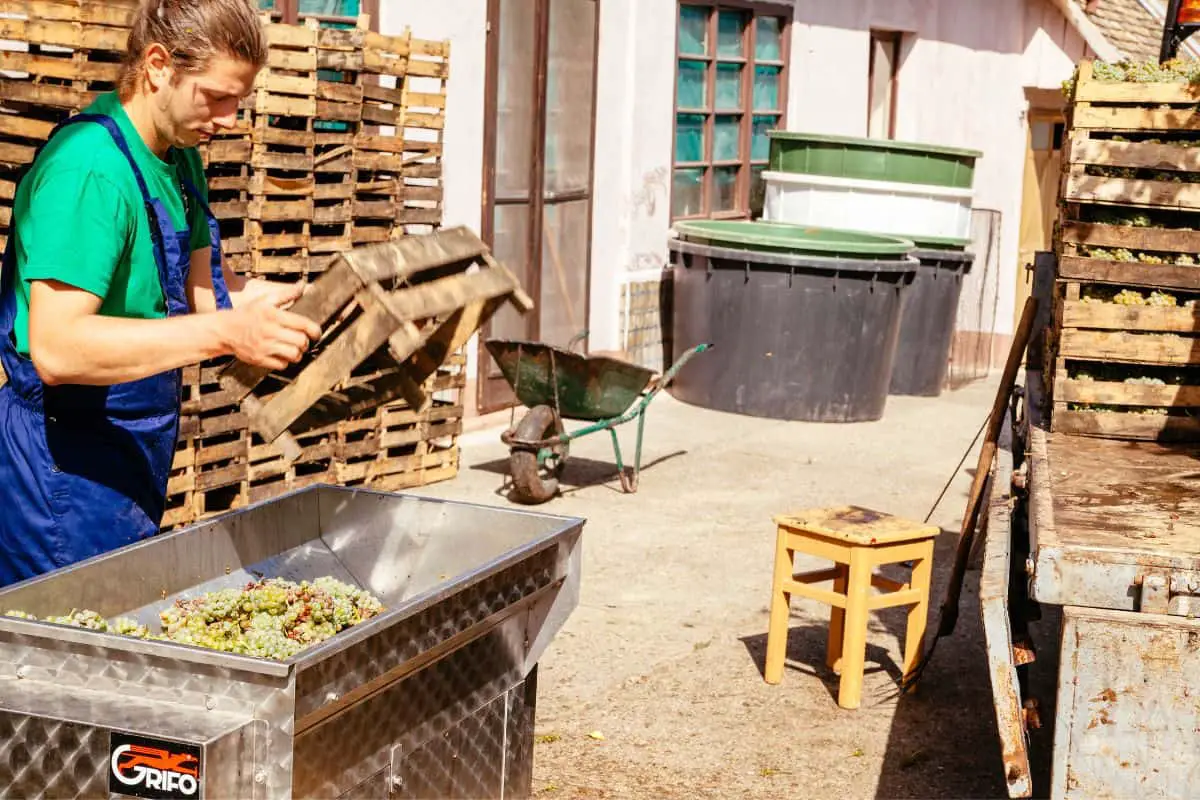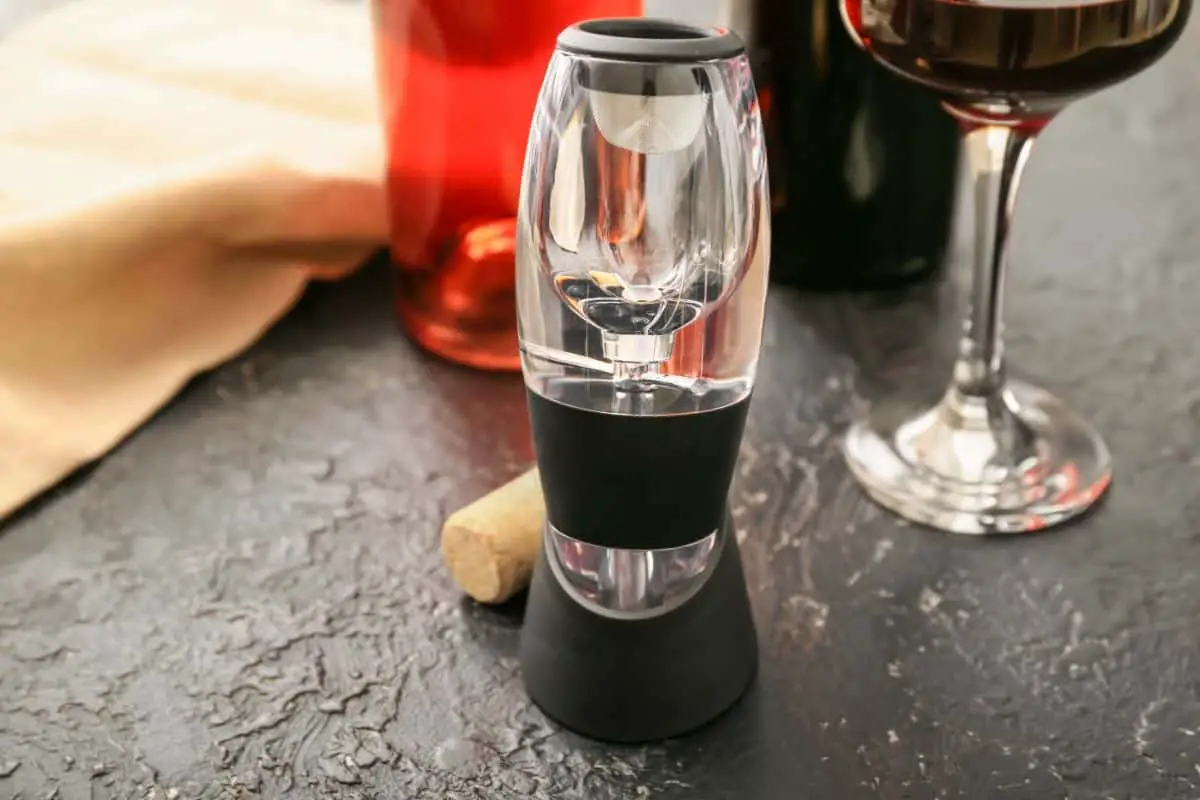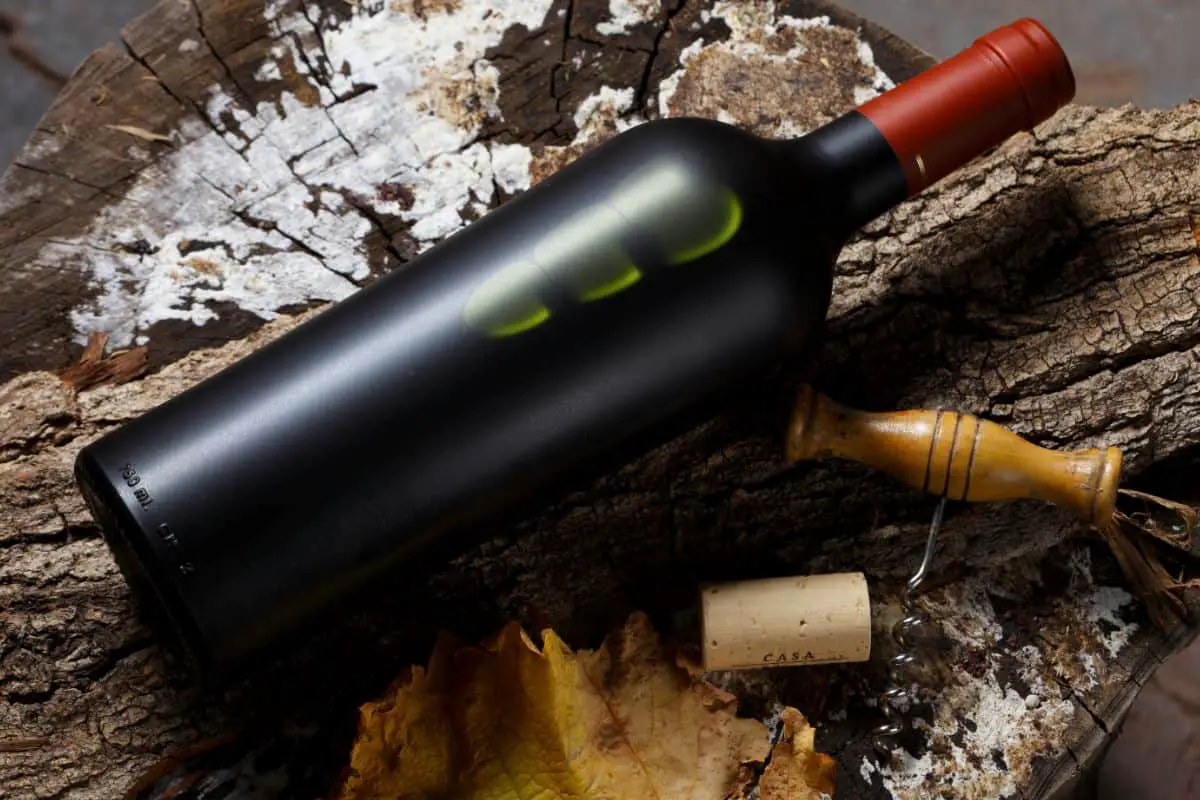Yeast is one of the most important ingredients in the production of alcohol, most notably in the fermentation or brewing processes, depending on the type of alcohol that is being made.
Whilst many people might only associate yeast with the brewing of beer, it is used in the winemaking process as well, and is paramount to the overall production. But what exactly does it do, and why is it so important? (Find out if wine is gluten free here.)
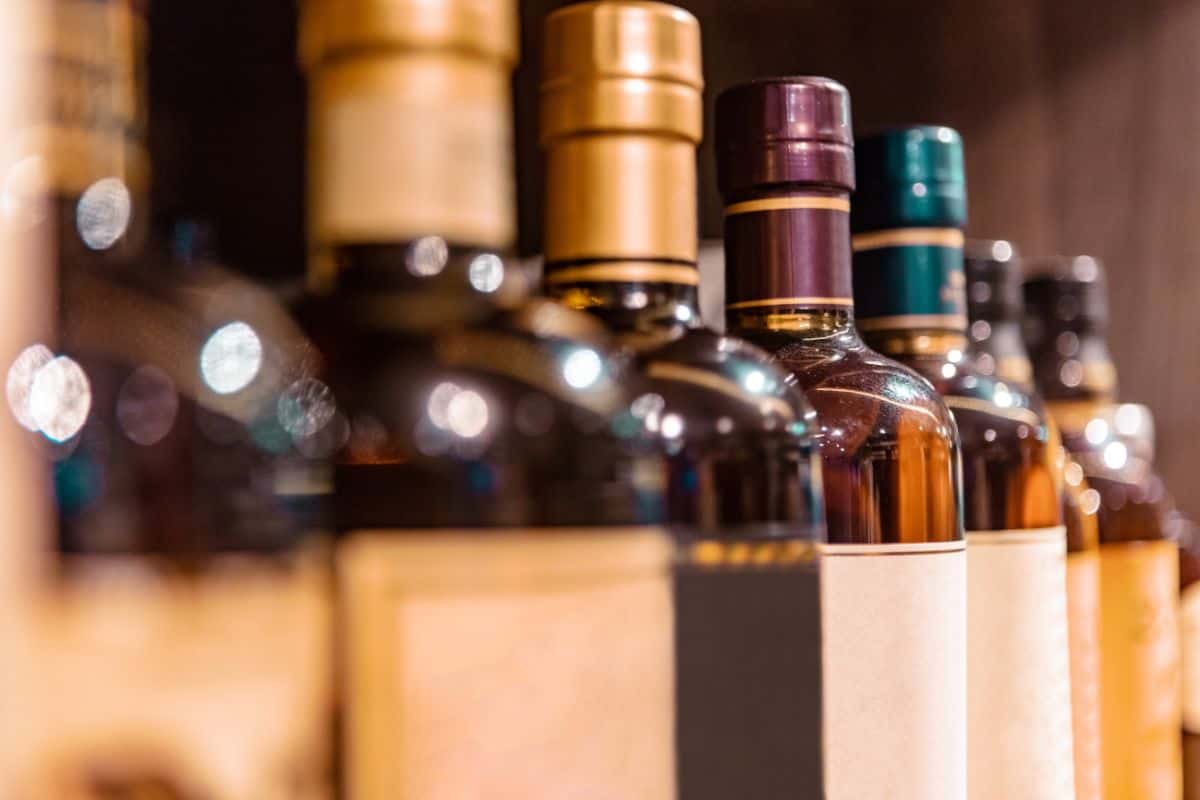
What Is Yeast?
Officially classified as a member of the fungus kingdom, yeast are single-celled microscopic eukaryotic bacteria that first originated hundreds of millions of years ago.
Alcohol Production
In the production of alcohol, the alcoholic content is created through the production of ethanol, a product of fermentation.
In simple terms, fermentation is the process of turning carbohydrates into alcohol using anaerobic, or oxygen free, conditions.
Yeast & Winemaking
In winemaking, the yeast is used to release the sugars inside of the grapes, breaking the skin for fermentation to begin. Within this process, the yeast on the skin of the grapes interacts with the sugars, converting them into ethanol.
The more sugars in the grapes, the higher the alcohol content will be when the process is completed. This process continues until all the sugar has been transformed into alcohol, and at around 15% the remaining yeast die.
Types of Yeast
Of course, within the fungus kingdom, there are several different kinds of yeast, only a few of which are suitable for alcoholic wine production.
When purchasing yeast for home use, there are two different kinds that can be bought, namely dry and wet (or fresh). Winemaking generally requires the use of dry yeast, whilst baker’s use wet yeast for baking bread.
All yeasts are also classified as being active or instant.
Active means that the yeast needs to be activated with water, whilst the instant kind doesn’t require any assistance, and will get to work as soon as it is introduced to the sugars of the grapes.
Active yeasts are generally used by winemakers, as precision is required to get the right amount of fermentation.
A common yeast used in winemaking is the saccharomyces bayanus, but the most common is saccharomyces cerevisiae, used due to the predictable nature of the outcomes it produces.
Saccharomyces Cerevisiae
Derived from the latinized Greek for “sugar-mold” (saccharon & myces), and the latin for “beer” (cerevisiae), this is also known as brewer’s years, ale yeast, top-fermenting yeast, baker’s yeast, Ragi yeast, and budding yeast.
This yeast has vigorous fermentation abilities, which are very predictable, making it perfect for the mass production of wine where errors or anomalies are undesirable.
The Fermentation Process
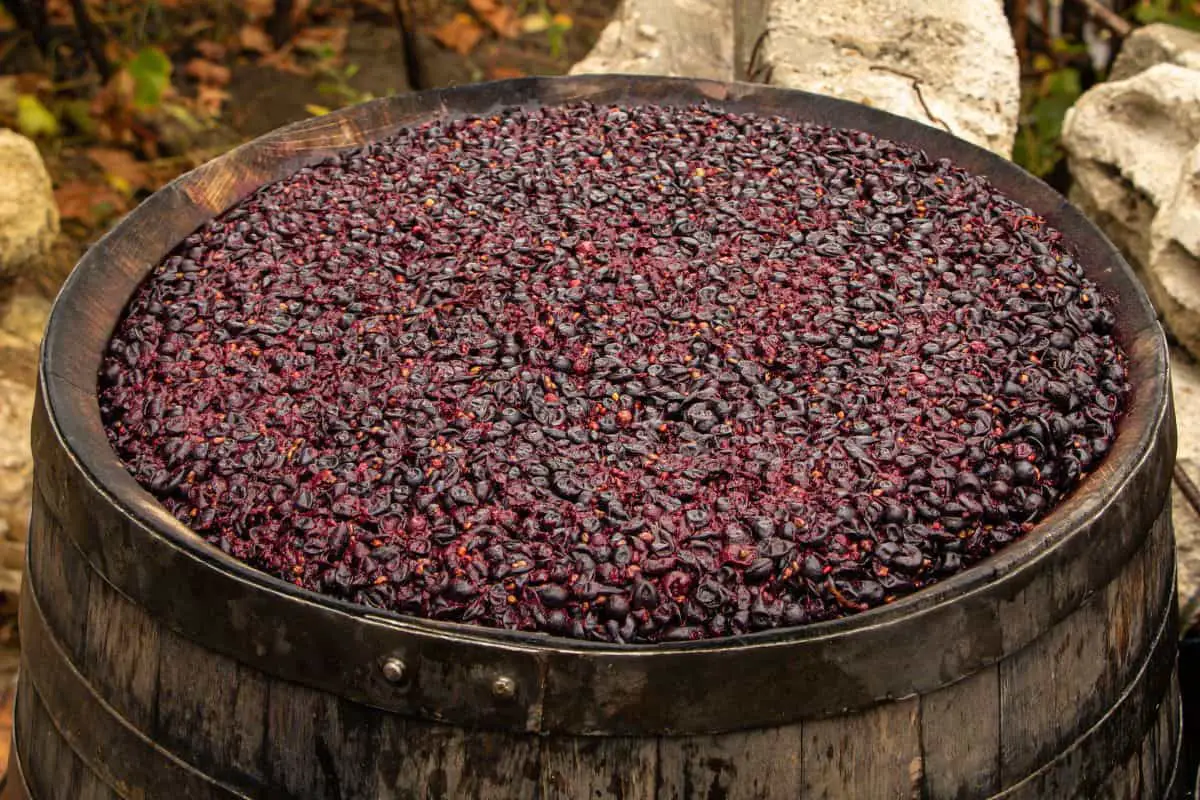
There are generally five stages in the fermentation process of wine.
This begins when the yeast settles into the juice and adjusts to the temperature and pH. It also assesses the availability of nutrients needed to grow.
It is during these initial stages that the yeast consumes the majority of the nutrients it needs, and as such these nutrients need to be topped up as the process progresses so that the yeast don’t die and the fermentation fails.
After this has been going on for 48 hours, the yeast multiplies, reproducing in numbers in an exponential burst, before the numbers begin to decline.
This is the expulsion of the nutrients and energy they have attained during the initial stages, and is important for the entire process to work.
Once the yeast has died, it will collect in the bottle of the drum or barrel, forming something called gross-lees.
These are widely contested in the winemaking world, with some claiming they enhance the flavor and palette of the wine, whilst others disavow it as a waste product.
The Importance Of Yeast
From this article alone, it is easy to see why yeast is so important to many of the things we undertake on this planet, and this is only one facet of the things it can accomplish.
Food Production
Without yeast, not only would we not be able to bake bread and other goods, but we also wouldn’t have access to nutritional supplements, such as yeast extract (like Marmite and Vegemite) and other nutritional yeast, which is used in a lot of vegan products like cheese and egg powder.
Bioremediation
Amazingly, yeast has also shown signs of being effective in bioremediation. This is any part of the production process where living or dead organisms are used to cleanse the air of pollutants and harmful elements.
It is known to degrade palm oil mill effluent, TNT, hydrocarbons, alkalines, fatty acids, fats and oils.
Industrial Ethanol Production
Ethanol fuel has been produced for some time by using the same process seen in alcohol production.
This allows for fuel to be produced on a larger scale, and is a much more environmentally friendly source of automobile fuel than petroleum or diesel.
Probiotics
Some probiotics use yeast as a means of establishing and maintaining natural flora in the gastrointestinal tract.
This has been shown to reduce the symptoms of acute diarrhea, and could be an important form of medicine in countries without reliable access to clean drinking water.
It is also effective in reducing bowel movements in people with diarrhea-centric irritable bowel syndrome.
Scientific Research
They also have wide application in scientific research, as their status as eukaryotic cells are perfect to resemble other living cells, even those found in human beings.
This can have applications for the testing of drugs and chemicals, as well as testing the effects of harmful substances on living organisms, reducing animal testing.
Final Thoughts
And there we have it, everything you need to know about yeast, and the wide range of applications it has across a variety of fields.
With the rise in baking and home alcohol production, yeast has developed a wider, more noticeable presence in our lives. Who knows what they can use it for next?
- How to Learn Wine Tasting: Essentials for Beginners - March 10, 2024
- How to Learn to Like Wine: Cultivating an Appreciation for the Vintner’s Art - March 10, 2024
- Thanksgiving Sangria: A Flavorful Twist to Your Holiday Table - August 27, 2023


